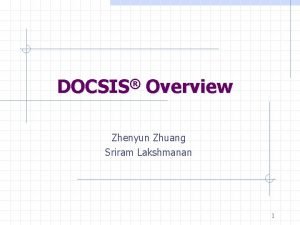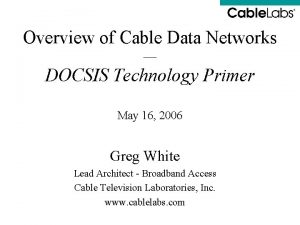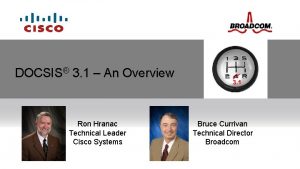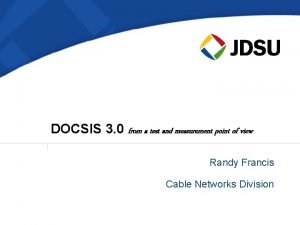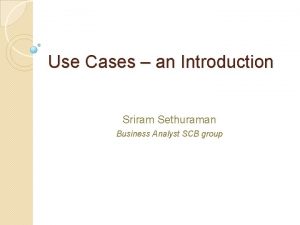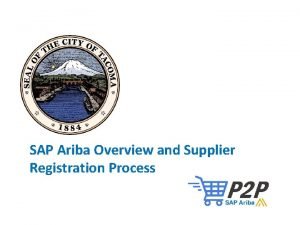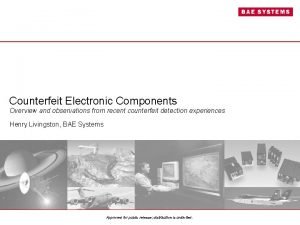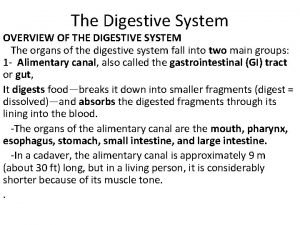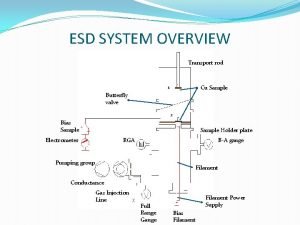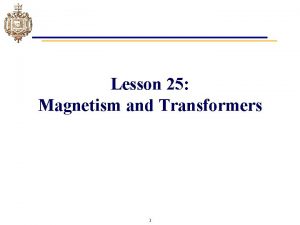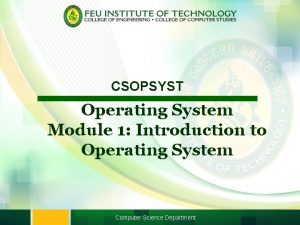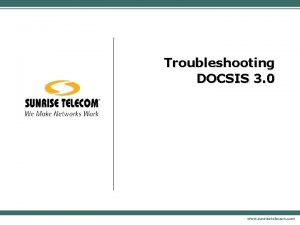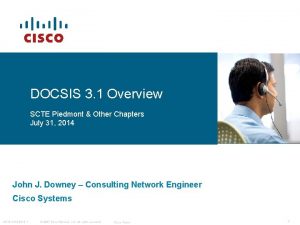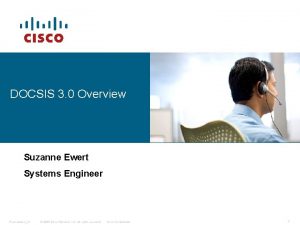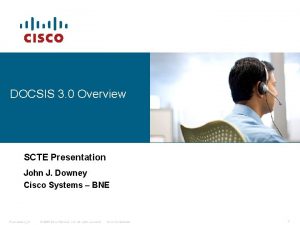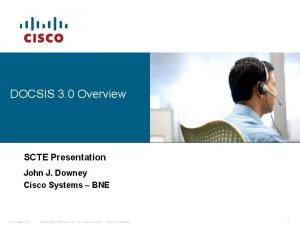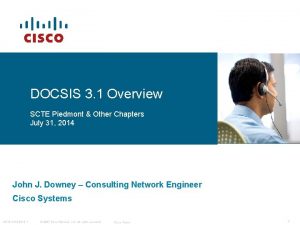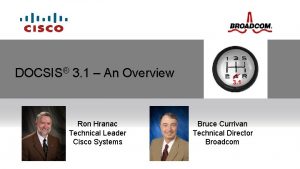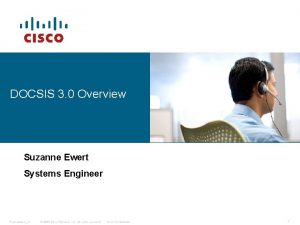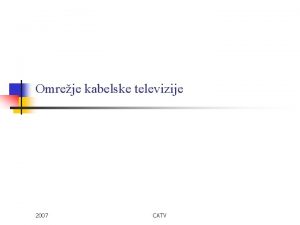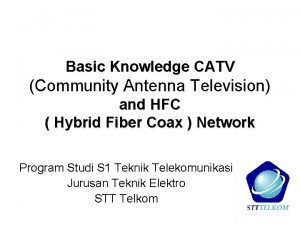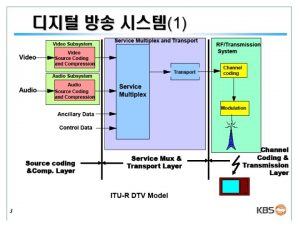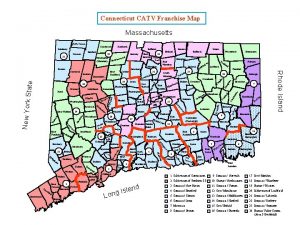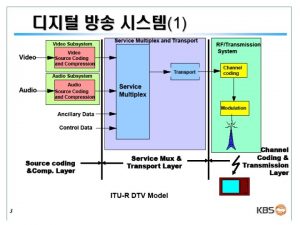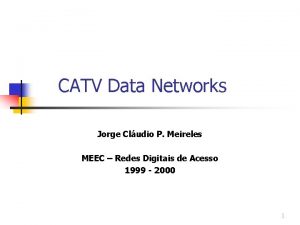DOCSIS Overview Zhenyun Zhuang Sriram Lakshmanan 1 CATV








































- Slides: 40

DOCSIS® Overview Zhenyun Zhuang Sriram Lakshmanan 1

CATV networks with DOCSIS Services Video Single Integrated Pipe HFC (Cable) Network using DOCSIS transport ATM or IP Over x. DSL Lines Fixed Wireless High-Speed Data Voice/Fax “A network where all kinds of information (voice, fax, video, data) are transported uniformly using packet-based transport and switching media. ” 2

Cable Architecture New Services Opportunities MPEG Services • HVAC control • Fire sense & control • Security • Air quality monitoring • Child monitoring • Energy management, etc. Operator Core Backbone IP Services Packet. Cable • Remote file sharing • Shared calendar • Unified messaging • Managed services Core Network DOCSIS Cable. Home CM CMTS Operator Aggregation network CM CM CMTS Aggregation Network CM CM CM Access Network Operator administered Backend Headend CPE 3

What is a CMTS? A CMTS is a Cable Modem Termination System, or router, which is a device located in the cable headend that allows cable television operators to offer high-speed Internet access to home computers. 4

What does Cable Modem mean? “CABLE” is short for Cable TV (CATV) Network “MODEM” is MOdulator-DEModulator Actually more like a network adapter than a modem CMTS (Head-End) Cable Modem Upstream Demodulator QPS K/16 -QAM F: 5 -65 MHz BW: eg 2 MHz Rate: eg. 3 Mbit/s Upstream Modulator QPS K/16 -QAM F: 5 -65 MHz BW: eg 2 MHz Rate: eg. 3 Mbit/s Downstream Modulator 64 -QAM/256 -QAM f: 65 -850 MHz BW: 6/8 MHz Rate: 27 -56 Mbit/s Downstream Demodulator 64 -QAM/256 -QAM f: 65 -850 MHz BW: 6/8 MHz Rate: 27 -56 Mbit/s 5

Inside the Cable Modem • Tuner • Demodulator • Media Access Control (MAC) device • Microprocessor 6

Cable Modems What’s Inside? 7

Cable TV Frequency Allocation • 5 - 50 MHz Sub band Upstream Cable • 54 - 88 MHz VHF-Lo Ch. 2 – 6 • 88 – 108 MHz • 90 – 174 MHz • Mid band 174 – 216 MHz VHF-Hi • 216 – 300 MHz • 300 – 1002 MHz • FM Radio Super band Hyper band 470 - 806 MHz UHF FM radio Downstream Cable Ch. 7 -13 Downstream Cable Ch. 14 -69 8

CM- Up Stream • What the Cable Modem transmits • Frequency 5 -42 MHz (5 -42 MHz) • Bandwidth e. g. , 2 MHz • Modulation QPSK or 16 -QAM • Data-rate e. g. , 3 Mbit/s (~400 KB/s) • Transmit bursts of data in timeslots (TDM) • Reserved and contention timeslots 9

CM- Down Stream • What the Cable Modem receives • Frequency 50 -750 MHz • Bandwidth 6 MHz (USA); or 8 MHz (EU) • Modulation 64 -QAM (or 256 QAM) • Data-rate 27 -56 Mbit/s (4 -7 Mbyte/s) • Continuous stream of data • Received by all modems 10

DOCSIS §Data Over Cable Service Interface Specification. §Developed by Cable Labs and approved by the ITU in March 1998, defines the communications and operation support interface requirements for a data over cable system. §It permits the addition of high-speed data transfer to an existing cable TV (CATV) system. It is employed by many cable television operators to provide Internet access over their existing hybrid fibre coaxial (HFC) infrastructure. 11

Euro. DOCSIS § § The European version of DOCSIS is called Euro. DOCSIS. The main difference is that in Europe cable channels are 8 MHz wide (PAL), whereas in North-America cable channels are 6 MHz wide (NTSC). This translates to permitting more bandwidth to be allocated to the downstream data path (taken from a user's point of view, downstream is used to download data, while upstream is used to upload data). There also different DOCSIS flavors in Japan. 12

DOCSIS Evolution So Far DOCSIS 1. 0 (High-Speed Internet Access) March 26, 1997 n n Specification first issued on 30 -million DOCSIS modems shipped worldwide as of Q 3 -2003 5 Mbps DOCSIS 1. 1 (Telephony, Gaming, Streaming Media) 1999 n Quality of Service (Qo. S), service security, operations tools n Backward compatible with DOCSIS 1. 0 n 10 Mbps DOCSIS 2. 0 (Capacity for Symmetric Services) 2001 n More upstream capacity (30 Mbps) n Improved robustness against interference (A-TDMA and S-CDMA) n Backward compatible with DOCSIS 1. 0 and 1. 1 13

Continued DOCSIS Evolution DOCSIS Set-top Gateway (DSG – set-top signaling path) n n Specification first issued on February 28, 2002 Currently being updated, I 02 version later this year Interoperability testing in Q 3 2004 Certification/Qualification in Q 4 2004 e. DOCSIS (DOCSIS in embedded devices) n n Specification first issued on March 12, 2003 Details how DOCSIS cable modems are integrated into multifunction devices, for example: w w Embedded Media Terminal Adaptor (E-MTA) – Packet. Cable Vo. IP Embedded Portal Services (E-PS) – Cable. Home Residential Gateway Embedded Set-top Terminal Plant and network health monitoring devices 14

DOCSIS® Roadmap DOCSIS Version DOCSIS 1. 0 DOCSIS 1. 1 DOCSIS 2. 0 DOCSIS 2. X DOCSIS 3. 0 Services Broadband Internet Tiered Services Vo. IP Video Conferencing Commercial Services Roaming Services Entertainment Video X X X X X X X X X X X 40 5 200 6. 3 10 80 30 170 100 450 Consumer Devices Cable Modem Vo. IP Phone (MTA) Residential Gateway Video Phone Mobile Devices IP Set-top Box Downstream Bandwidth Mbps/channel Gbps/node Upstream Bandwidth Mbps/channel Mbps/node

Cable Bandwidth Upstream Rates Downstream Rates DOCSIS 2. 0 Raw Data Rate (Mbps) DOCSIS 1. 0/1. 1 16

Features §DOCSIS uses the TDMA/SCDMA access method. This is different from the Ethernet system, in that DOCSIS systems experience few collisions. §DOCSIS 2. 0 brings more options to the upstream, including higher orders of modulation (64 -level QAM) and wider channels (6. 4 MHz). §DOCSIS 2. 0 also introduces Ingress Cancellation, which greatly improves throughput. §All three versions of the DOCSIS standard support a downstream throughput of up to 38 Mbit/s per channel with 256 -level QAM. §The Euro. DOCSIS standard supports downstream throughput of up to 51 Mbit/s per channel (due to the 8 MHz channel width). 17

DOCSIS 3. 0 § Currently under development, DOCSIS 3. 0 is expected to feature "channel bonding", which enables multiple downstream and upstream channels to be used together at the same time by a single subscriber. 18

Equipments § Before a cable company can run DOCSIS, it must upgrade its HFC network to support a return path for upstream traffic. § The customer PC and associated peripherals are termed Customer Premise Equipment (CPE). It's connected to the cable modem, which is in turn connected through the HFC network to the CMTS. § The CMTS will then route traffic between the cable network and the Internet. § Cable operators (sometimes called Multiple Service Operators - MSOs) have full control of the cable modem's configuration. 19

Current Market Comcast, the largest cable provider in the United States, caps downstream bandwidth at 4 Mbit/s and upstream bandwidth at 384 kbit/s for standard home connections. In some areas they are phasing in 6 Mbit/s and 8 Mbit/s downstream and 768 kbit/s upstream. 20

Cont’ Another major cable provider, Cox Communications recently upgraded their base package to 4 MBit/s downstream and 512 kbit/s upstream. Their premier package allows downstream rates of 9 Mbit/s and upstream rates of 1 Mbit/s. In select markets (such as Northern Virginia) they have increased these speeds further still, allowing 15 Mbit/s downstream and 2 Mbit/s upstream for the premier package. The operator UGC (locally known as UPC) in Sweden offers the service Chello in ranges up to 24 Mbit/s downstream and 8 Mbit/s upstream. 21

Architectural Framework 22

Interface Categories 1. 2. 3. Data Interfaces CMCI-Cable Modem CPE Interface CMTS-NSI CMTS-Network side Interface Operations Support Systems Interfaces Network Management, billing, business processes RF Interfaces Between Cable modem and cable network Between CMTS and Cable network(downstream) Between CMTS and cable network (upstream) Security Interfaces 23

Communication Protocols SNMP TFTP DHCP UDP IP, ICMP LLC Security MAC PHY 24

Physical Layer specifications Supports TDMA/FDMA and FDMA/Synchronous-CDMA What’s Synchronous-CDMA? Why is it better than just CDMA? Data Transmitted in two dimensions code, time. Data to be transmitted into 2 D frames prior to transmission A burst from a CM can be transmitted on 2 or more codes in one or more frames In normal operation the MAC requests the PHY to transmit a burst of length n minislots starting at the minislot – m (which it has been assigned by the CMTS) 25

S-CDMA Channel 26

Physical Layer (continued) Modulations- high spectral efficient (upto 128 QAM Improvement over Previous spec. ) Reed Solomon and Trellis Coded Modulation for Forward Error Correction(also contributes to the improvement) Interleaver and scrambler for noise immunity Synchronization using SYNC bytes -provides upto 6. 25 us accuracy-TDMA Minislot duration Sublayers: 1. Downstream Transmission Convergence sublayer(additional services like Digital video and new multimedia services) 2. Physical Media Dependent Sublayer(defines all the RF and media related constituents) 27

MAC Sublayer Bandwidth allocation controlled by CMTS A stream of mini-slots in the upstream Dynamic mix of contention and reservation based transmit opportunities Bandwidth efficiency through support of variable length packets Extensions provided for future support of ATM QOS Security Wide range of data rates 28

Logical Upstream Channel 1. 2. 3. 4. Logical Upstream channel A CM can register to operate on only one logical upstream channel Four types of logical upstream (designed for better allocation and compatibility with existing CMs) Type 1: DOCSIS 1. x upstreams that do not support DOCSIS Features Type 2: Mixed upstreams that support DOCSIS 1. x and DOCSIS 2. 0 TDMA Bursts Type 3 A: DOCSIS 2. 0 TDMA bursts only Type 3 B: S-CDMA upstreams supporting CMs operating in S-CDMA mode 29

MAC Frame MAC Header Payload 30

MAC FRAME (Contd. ) Note that compatibility with ATM and future schemes is envisaged 31

MAC Operation 32

Bandwidth allocation Each CM has one or more short (14 bit) service identifiers) as well as 48 bit addresses Upstream bandwidth is divided into number of minislots numbered relative to a master reference maintained by the CMTS and communicated through SYNC byte CMs may issue requests to the CMTS for bandwidth CMTS transmits allocation MAPs downstream defining the usage of minislots 33

Allocation MAP MAC management message Is a varying length MAC management message transmitted by the CMTS to define transmission opportunities on the upstream channel Consists of a fixed length header followed by a variable number of information Elements Request IE specifies a time interval during which requests may be made for upstream bandwidth 34

A typical Scenario At time t 1, the CMTS transmits a MAP whose effective starting time is t 3. Within this MAP is a request IE which will start at t 5. At t 2, the CM receives this map and scans it for request opportunities. In order to minimize request collisions, it calculates t 6 as a random offset based on a Backoff start value in the MAP At t 4, the CM transmits a request for as many minislots as needed to accommodate the PDU. Time T 4 is based on calculating the ranging offset so that the request will arrive at the CMTS at t 6 35

A typical scenario At t 6 the CMTS receives the request schedules it for service in the next MAP. At t 7, the CMTS transmits a MAP whose effective starting time is t 9. Within this MAP a data grant for the CM starts at t 11 At t 8, the CM receives the grant and scans for its data grant At t 10, the CM transmits data so that it will arrive at the CMTS at t 11. Other cases If the request collides and is lost, it can be identified from the next MAP that there is no ACK or allocation and a backoff is performed and retried The CMTS may not allocate bandwidth in the next MAP , when it indicates a grant length of 0. As long as the CM receives a zero length grant it must not retry and keep waiting 36

Quality of Service QOS is achieved by providing a number of flows with a range of bandwidth, delay parameters using service flows and classifiers A service flow is a unidirectional flow of packets that is provided a particular QOS The CM and CMTS provide QOS by shaping, policing and prioritizing traffic according to the QOS parameter set defined for each service flow. 37

Mechanism The CMTS assigns one or more service flow Ids to each CM corresponding to the service flows required by it. The mapping is negotiated between the CM and CMTS during registration or can also be done dynamically using the dynamic service establishment mechanism In a basic implementation two service flows (one upstream, one downstream) are used. (which can be used for IP traffic ) Incoming packets are matched to a classifier to determine to which service flow the packet is forwarded 38

Other layers Network layer - uses the semantics of IP and ICMP Higher layer protocols such as SNMP, TFTP, DHCP , Time of Day protocol are also to be supported(mandatory) 39

Summary DOCSIS uses advanced modulation and coding to improve spectral efficiency Required QOS is provided by the CMTS by appropriately provisioning resources and granting slots for transmission using service flows The decision on the channel allocation and grant is made by the CMTS to satisfy the QOS requirements Support for IP, ATM and possible future extensions is also provided Thus transfer of IP traffic through cable is accomplished with additional overhead at the CMTS 40
 Sriram lakshmanan
Sriram lakshmanan Social searcher
Social searcher Laks v.s. lakshmanan
Laks v.s. lakshmanan Jdsu test set
Jdsu test set Docsis
Docsis Channel bonding docsis
Channel bonding docsis Docsis pre-testing
Docsis pre-testing Bingbing zhuang
Bingbing zhuang Chemdraw clean up reaction
Chemdraw clean up reaction Xiaoyang zhuang
Xiaoyang zhuang Xiaoyang zhuang
Xiaoyang zhuang Xiaowei zhuang
Xiaowei zhuang Sriram vishwanath
Sriram vishwanath Ashok sriram md
Ashok sriram md Sriram rajamani
Sriram rajamani Sriram rajagopal
Sriram rajagopal Sriram rajagopal edgeq
Sriram rajagopal edgeq Field trip by aditi sriram answer key
Field trip by aditi sriram answer key Sriram rajamani
Sriram rajamani Cardiac notch
Cardiac notch 1 kings overview
1 kings overview Deviation and foregrounding in stylistics
Deviation and foregrounding in stylistics Generations overview
Generations overview Motivational overview in software testing
Motivational overview in software testing Cell signaling overview
Cell signaling overview An overview of data warehousing and olap technology
An overview of data warehousing and olap technology Ariba overview
Ariba overview What is sa/sd methodology?
What is sa/sd methodology? Overview
Overview Counterfeit electronic components an overview
Counterfeit electronic components an overview Ductus parotideus
Ductus parotideus System overview sample
System overview sample Consulting industry overview
Consulting industry overview Introduction product overview
Introduction product overview In uml is a connection among things
In uml is a connection among things Pseudo wire
Pseudo wire Sap
Sap Transformer overview
Transformer overview Wan technologies overview
Wan technologies overview Dual mode in os
Dual mode in os Foundation of hrm
Foundation of hrm
